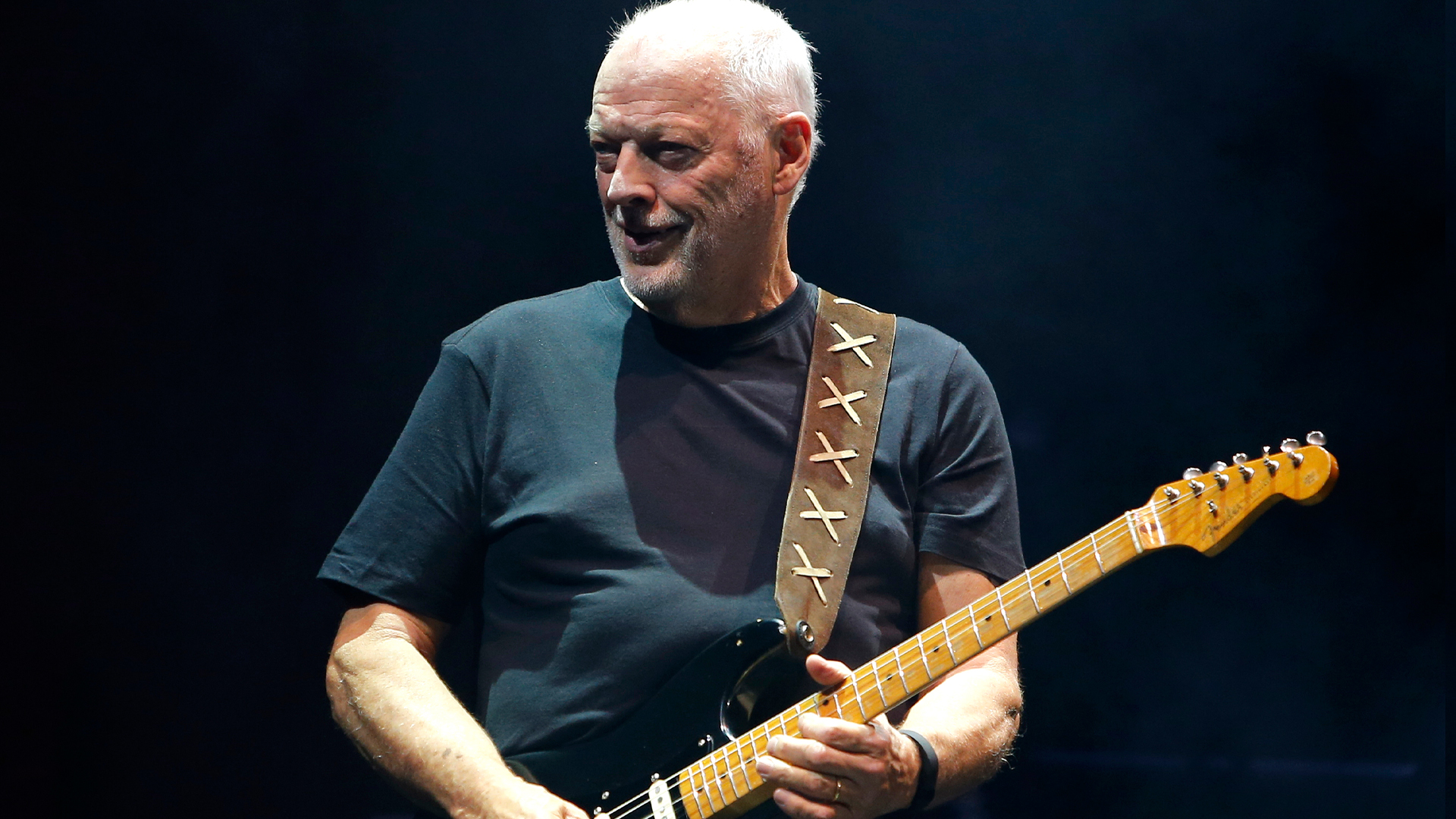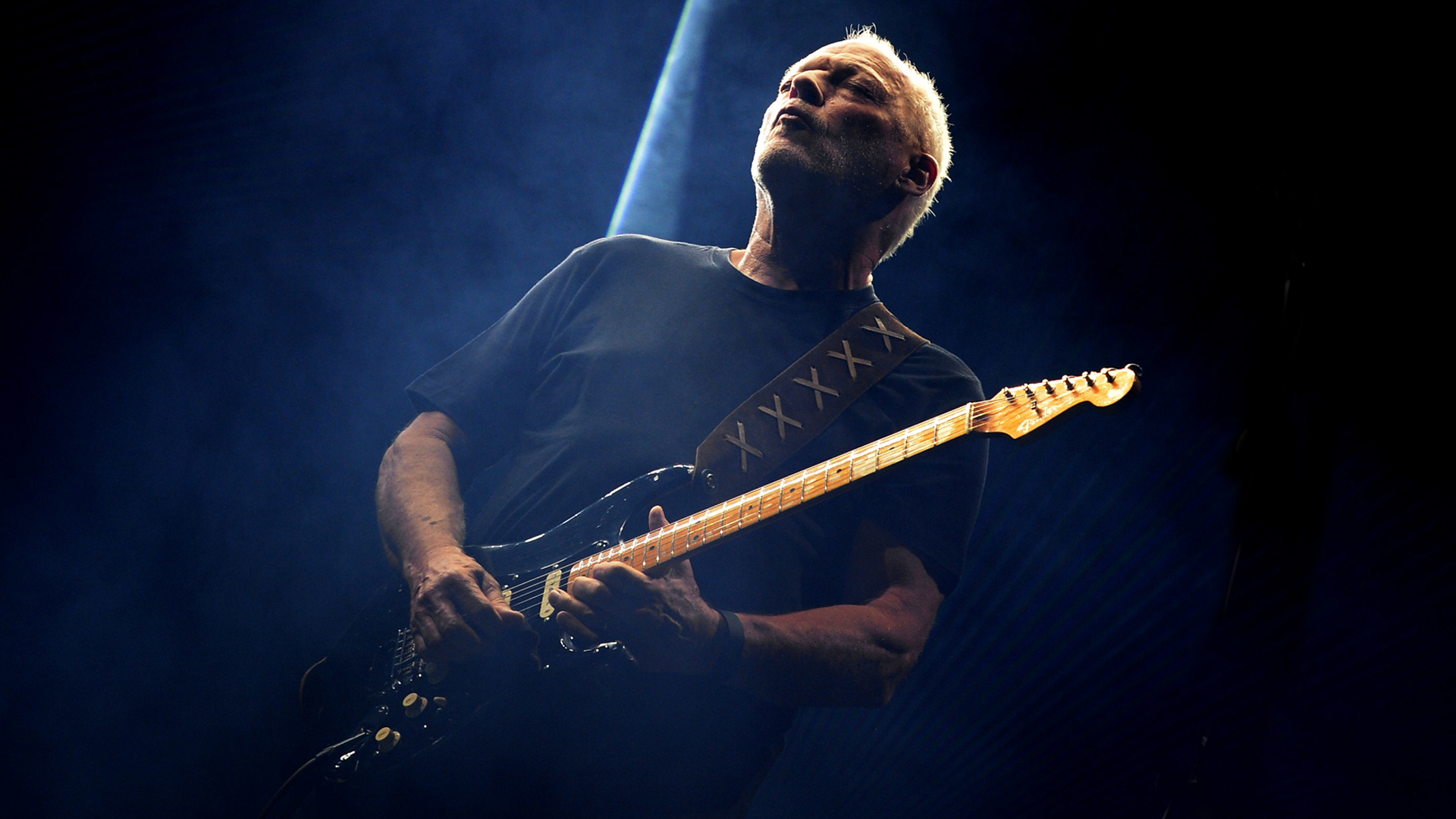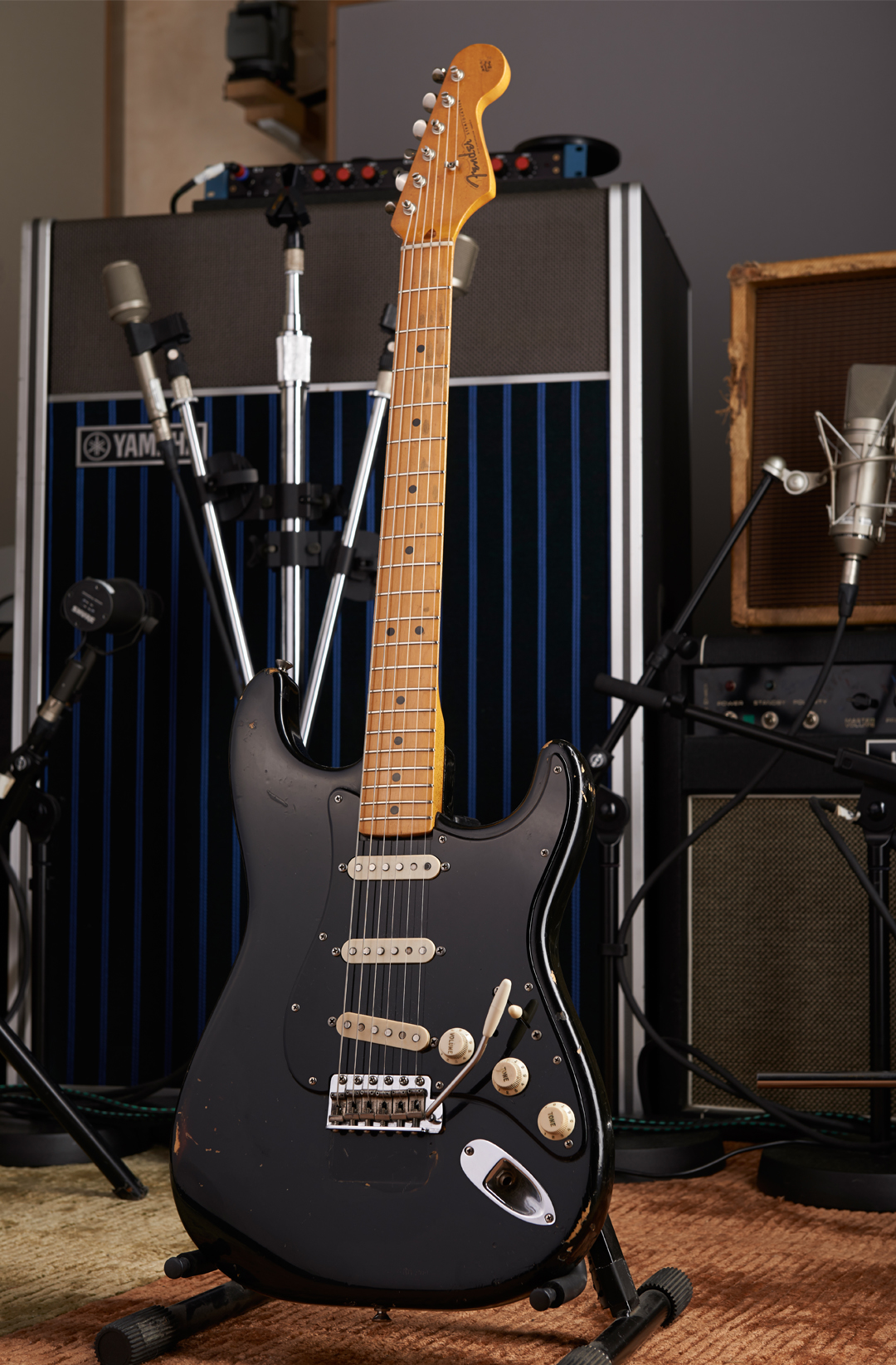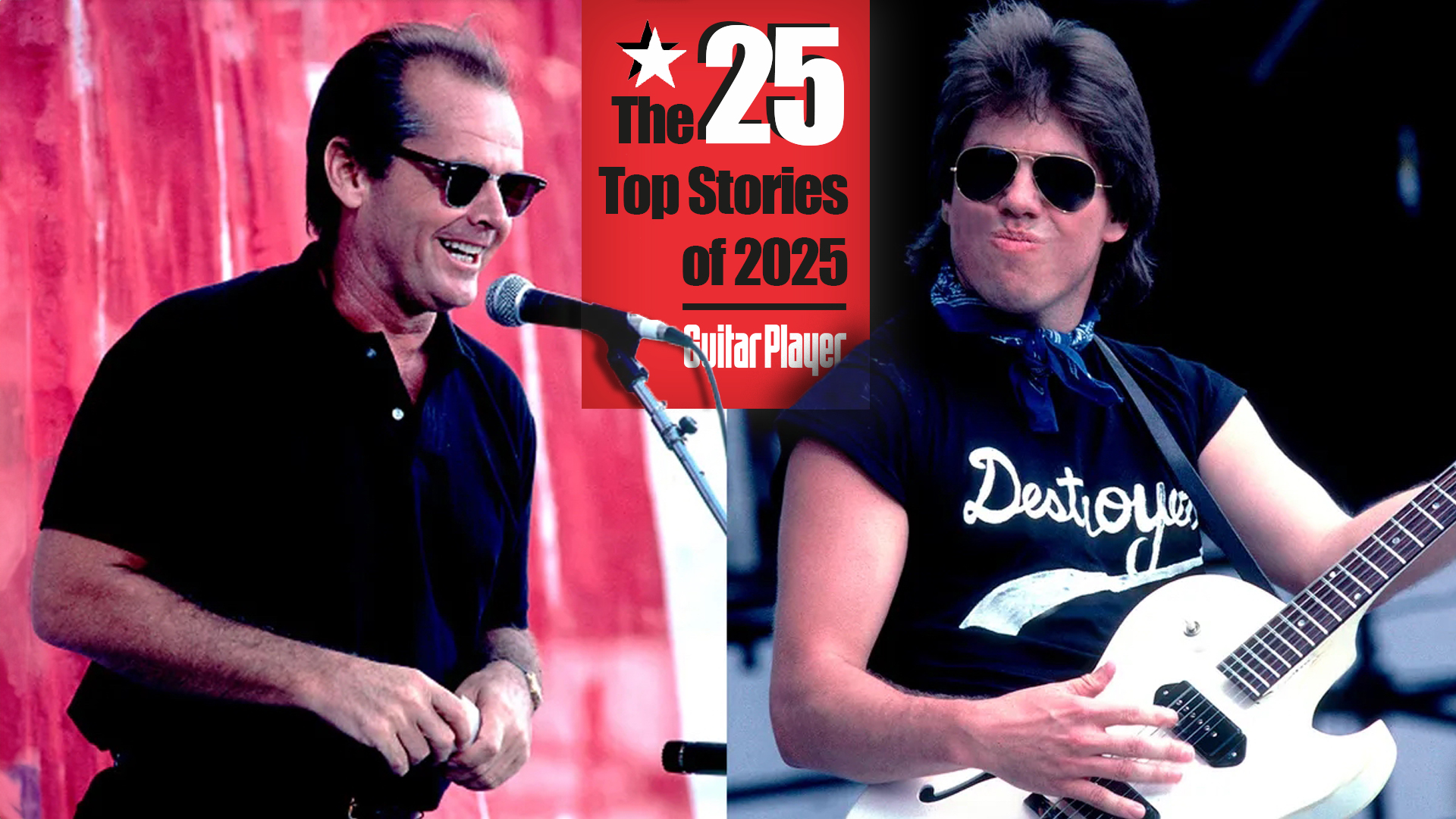"If you gave that guy a ukulele and a Pignose amp, he'd make it sound like the solo in 'Comfortably Numb.'" Bob Ezrin reveals David Gilmour's most important — and least known — guitar technique
The Pink Floyd producer offered his insights while sharing details about recording Gilmour's most famous solo

"David Gilmour is my favorite guitar player,” producer Bob Ezrin tells Guitar Player. “That's the truth. I love his work. What makes David my favorite guitar player is the combination of beauty, dignity, power and memorability that he musters up every time he picks up a guitar and plays something. I've said in the past that if you gave that guy a ukulele and a Pignose amp, he'd make it sound like the solo in ‘Comfortably Numb.’ He just has a way of massaging sound out of the guitar.”
Ezrin is well qualified to make that statement. The Canadian-born producer helmed three albums for Pink Floyd: The Wall, A Momentary Lapse of Reason and The Division Bell.
But of all the moments he committed to tape with Pink Floyd, Ezrin’s favorite by far is the first solo in “Comfortably Numb,” from 1980’s The Wall. Of the song’s two guitar solos, it’s the first that many guitarists name as their favorite of Gilmour’s many six-string excursions.
"The soaring melodic tone is an inspiration for me to try to find the right notes and really play from the heart,” Steve Morse told Guitar Player in its November 2024 issue in a tribute to Gilmour. “I've had the honor of working with Pink Floyd producer Bob Ezrin on many projects, and he always jokes with me when I'm having difficulty finding a solo he likes. He would remark, 'You know, Gilmour played the solo on 'Learning to Fly' in one take on a little practice amp,' which would elicit a predictably dour comeback from me about how we all can't be David Gilmour!"
Joe Perry is another fan of the first solo in “Comfortably Numb,” and credits both GIlmour’s tone and note selection for why it’s so good. “He’s got probably the best Strat tone I can think of,” Perry tells Guitar Player in the November 2024 issue. “He relies very little on distortion, and the stuff just sounds so sweet. It’s almost like what he doesn’t play that’s most important because he’s such a tasteful guitar player. It’s not about what speed; it’s about telling a story. He’s one of those guitar players who is few and far between, who really understands that.”
Ezrin agrees with that sentiment. When it comes to what makes Gilmour so exceptional, he says, “It's just a unique combination of musicality and sound and power that I don't see in anybody else, at least not that perfectly combined.
“There's two sides to David Gilmour,” he continues. “There are the amazing rhythm parts that he comes up with and the riffs that drive a song. They're all so simple, musical, memorable, and they stand repetition without ever getting boring because they are just so perfectly constructed. They're economical. There's no wasted notes, and every note that that is there plays a role towards advancing the overall idea of the riff. I think his playing is cinematic.”
All the latest guitar news, interviews, lessons, reviews, deals and more, direct to your inbox!
At the heart of it all is Gilmour’s ability to communicate with listeners through his guitar, expressing emotion as clearly as if speaking words.
“David tells stories with his guitar parts,” Ezrin says. “He has a very narrative style. There's a beginning, a middle, and an ending, especially to his soloing."
As Ezrin sees it, the formula works something like this.
“It starts off with a declaration: 'This is the emotion that I'm feeling at this moment, and this is where I'm about to take you.' And then he lays out a melodic structure that's in its way very classical. It almost goes through movements by the time it comes around to the end, and it refers back to itself several times during the process. It's a remarkable talent. It's never about flash with him, and he'll be the first one to say he's not the flashiest, he's not the fastest and he's not the most technical player out there. It's always about the melodic and sonic structure, and he is very, very aware of his sound.
"This is not somebody who's just playing shapes and looking for sound and continuity. He actually knows what it is that he's putting out there. And if he can hear it, he can play it."
— Bob Ezrin
And it all starts with Gilmour’s choice of gear.
“It's about the instrument he selects, and the combination of that plus whatever pedal it might go through and the amplifier that it ends up in,” Ezrin notes. “That's something that he does that he's very precise about and he's very considered about.”
But once the gear has been selected and it’s time to perform, Gilmour tends to lose himself in the moment.
“The parts themselves, most of the time he doesn't predetermine them,” Ezrin explains. “He gets into a zone and just starts reacting to the music. When soloing, he'll get the sound he wants, he'll mess around a little bit, and then the music will fly, and he finds the story that he wants to tell within the music, and usually very quickly. This is not hunt and peck. This is not somebody who's just playing shapes and looking for sound and continuity. He actually knows what it is that he's putting out there. And if he can hear it, he can play it. I think that's a remarkable talent.”

Part of it is down to an individual quirk of the guitarist. As Ezrin tells Guitar Player, much of Gilmour’s lyrical style of soloing is the result of him vocalizing the notes he’s playing. And as he points out, it's this technique that's at the heart of what makes his playing so emotive and affecting.
“Most of the time, he's singing along with what he's playing,” the producer explains. “It's sometimes audible in the room, but whether it's audible or not, you can see it on his face the way his cheek muscles move or the way his mouth moves, that he’s singing along and he knows what he's playing.”
All these elements came together in one magical moment when Gilmour cut the first solo in “Comfortably Numb.”
As Ezrin explains, the two solo were cut at different times, with different producers. “The solo at the end of the song was done when Roger [Waters] and I were in a different studio, and David did that with James Guthrie,” he explains.
“But the solo in the middle of ’Comfortably Numb' is the one that I think is the classic solo.”

As for how they achieved the solo Gilmour and Ezrin have different recollections. While both agree Gilmour used his famed Black Strat through a combination of Hiwatt amplifiers and his Yamaha rotary speaker cabinet, Gilmour recalled to Guitar World in 2015 that the solo is a composite of several takes.
“I banged out five or six solos,” the guitarist said. “From there I just followed my usual procedure, which is to listen back to each solo and make a chart, noting which bits are good. Then, by following the chart, I create one great composite solo by whipping one fader up, then another fader, jumping from phrase to phrase until everything flows together. That’s the way we did it on ‘Comfortably Numb.’ ”
Ezrin, on the other hand, recalls that the first solo was one complete take and quite possibly the very first of the bunch.
“That was essentially a first take” the producer states. “He played that part that's on the record his first time, ripping on top of the guide track that we were doing. Then he spent a bunch of takes trying to make it better. And my recollection, as is his, was that we went back to the original take; if not the original take, we went back to one of the very early ones.
“That was essentially a first take. He played that part that's on the record his first time, ripping on top of the guide track that we were doing."
— Bob Ezrin
“But that melody — that unbelievable, uplifting, memorable, bring-people-to-their-knees melody — that just came out of him all at once. We got the sound and we had a guide track that we were working with. The track wasn't even finished yet. We didn't have all the elements that would end up being on the record.”
Despite his achievement, Gilmour was reportedly unexcited by what he had created.
“David is one of the most understated and even tempered people that you've ever met,” Ezrin says. “He would never register extreme displeasure nor would he register extreme joy over a part that he played. He would play it, and he might turn and say, ‘That wasn't bad.’ He's a master of understatement, as many British people are.”
Ezrin, on the other hand, was thrilled by what he heard. “I fell on the floor when I first heard this solo,” he says. “For me, it's the most memorable I've ever heard. And for me, that solo is actually the emotional high point of the song. And as much as I love the lyric, which I think is one of the most brilliant that's ever been written by anybody, that solo just rises above everything as being the transcendent moment. A moment of pure musical joy.”
(Note: The solo begins in the video below at 2:38.)
- Christopher ScapellitiGuitarPlayer.com editor-in-chief
- Andrew Daly

